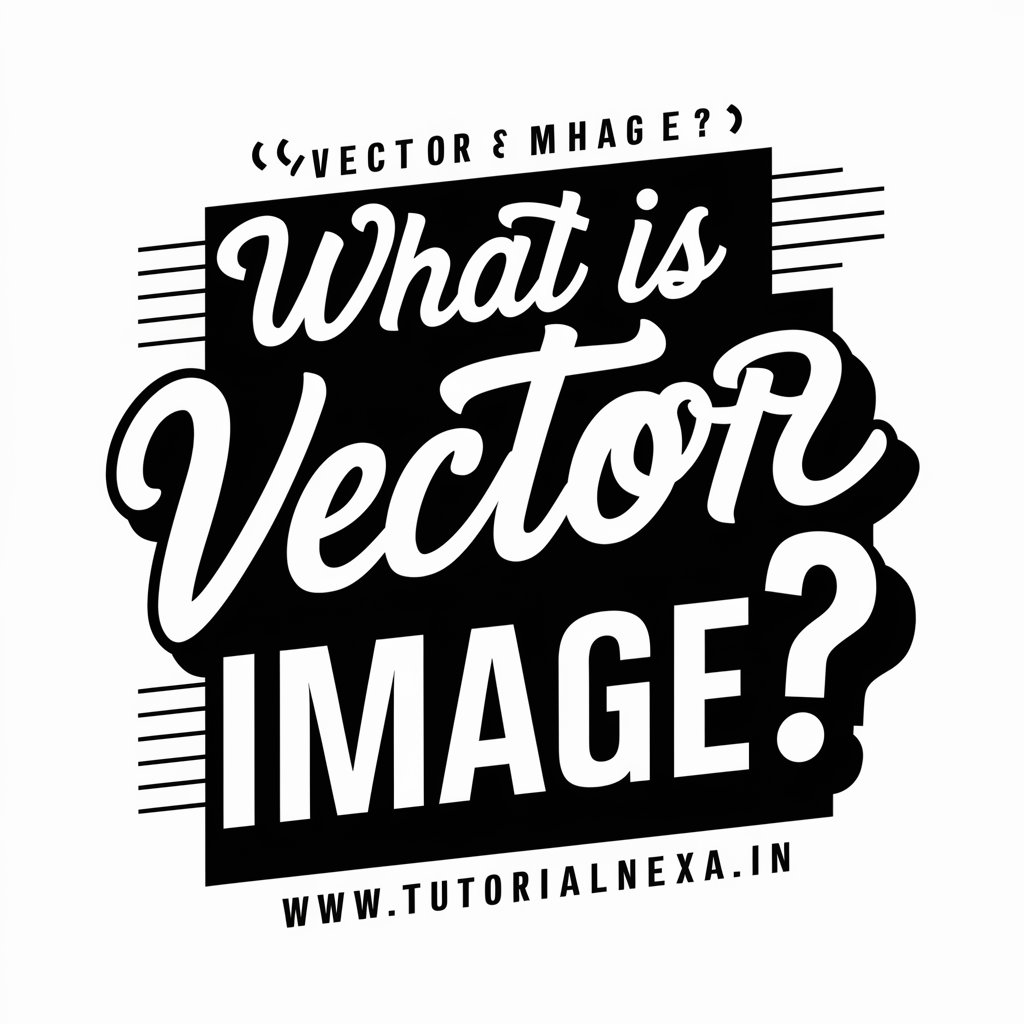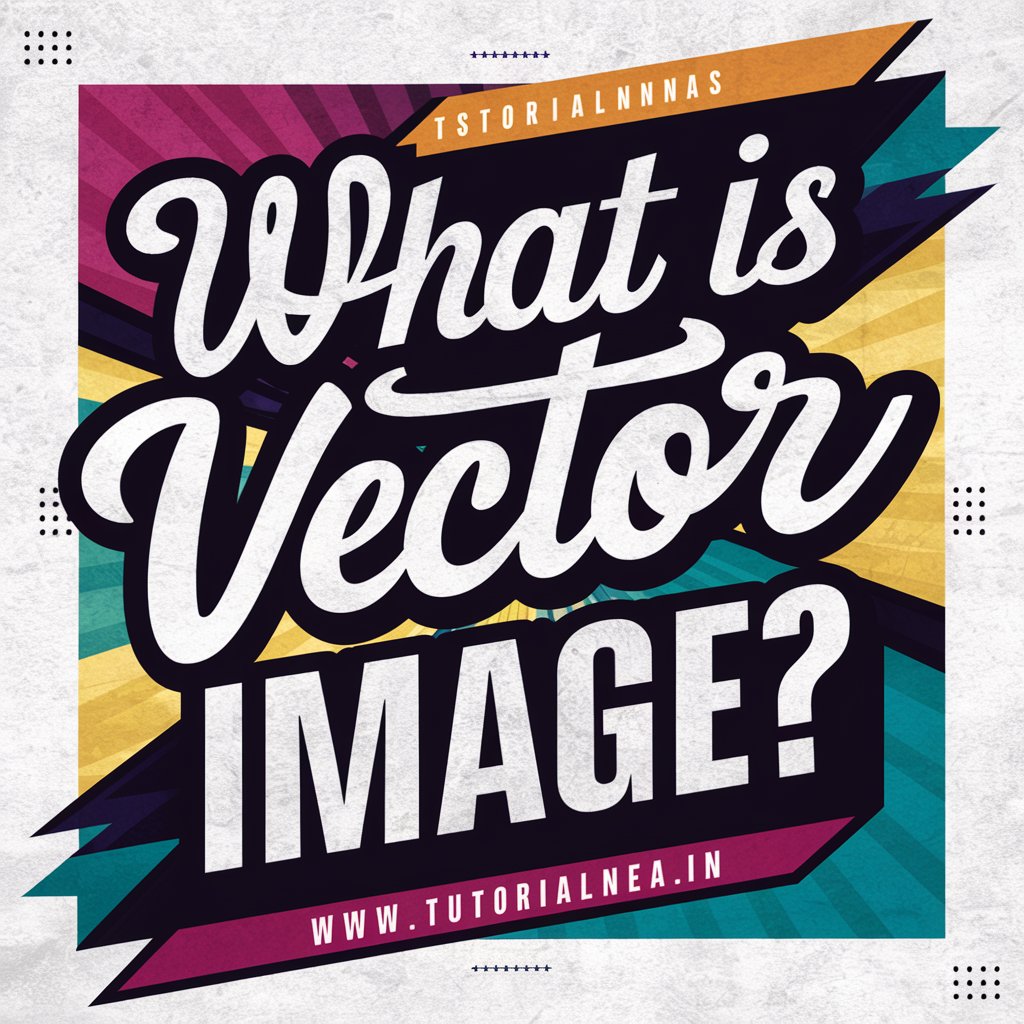What is a Vector Image?

A vector image is a type of digital picture that uses mathematical equations to create and store visual information. Unlike photographs or raster images, which are made up of tiny colored squares called pixels, vector images use lines, curves, and shapes defined by their mathematical properties. This unique approach allows vector images to be resized, scaled, and manipulated without losing their quality or becoming pixelated.
Here are 15 key points to help you understand vector images:
- Mathematical Precision: Vector images are created using mathematical formulas that define the relationships between different points, lines, and shapes.
- Resolution Independence: Vector graphics are not tied to a fixed resolution, so they can be resized freely without any loss of image quality.
- Scalability: This ability to resize vector images easily makes them ideal for various applications, from tiny icons to large banners.
- Smooth Edges: Vector images have smooth, clean edges regardless of their size, as they are not limited by pixel grid constraints.
- File Size: Vector files tend to be smaller compared to raster images because they store mathematical instructions rather than individual pixel data.
- Zoom Without Loss: When you zoom in on a vector image, it remains crisp and clear, revealing more detail without any blurring or pixelation.
- Editable: Vector images are editable at any point. You can modify colors, shapes, and sizes without losing quality.
- Illustrations and Logos: Vector graphics are commonly used for creating illustrations, logos, and other designs that require precise shapes.
- Typography: Fonts used in vector images are often vectors themselves, ensuring sharp text at any size.
- Print Quality: Vector graphics are favored in print design as they can be scaled up for high-quality printing without any loss.
- Design Software: Programs like Adobe Illustrator, CorelDRAW, and Inkscape are commonly used to create and edit vector images.
- Simple vs. Complex: Vector graphics can range from simple geometric shapes to intricate, detailed designs.
- Line Art: Technical drawings, schematics, and diagrams are often created as vector images due to their clarity and accuracy.
- Animation: Vector images are also used in animation, allowing for smooth motion and transitions.
- File Formats: Common vector file formats include SVG (Scalable Vector Graphics), AI (Adobe Illustrator), and EPS (Encapsulated PostScript).

overview of vector images presented in a table format
| Aspect | Description |
|---|---|
| Definition | A vector image is a digital graphic created using mathematical equations for shapes. |
| Pixelation | No pixelation as it doesn’t use pixels; it’s defined by mathematical properties. |
| Scaling | Easily scalable without losing quality due to mathematical formulas. |
| Resolution | Resolution-independent, making it suitable for various sizes without quality loss. |
| Edges | Has smooth, clean edges regardless of size. |
| File Size | Smaller file sizes due to storing mathematical instructions. |
| Zooming | Allows zooming without degradation, revealing details through zoom without loss. |
| Editability | Fully editable, enabling modifications without quality reduction. |
| Applications | Used for illustrations, logos, typography, diagrams, and more. |
| Print Quality | Maintains high print quality when scaled up for printing. |
| Software | Created and edited using software like Adobe Illustrator, CorelDRAW, and Inkscape. |
| Complexity | Ranges from simple shapes to intricate designs in simple vs. complex representations. |
| Typography | Fonts within vector images are also vectors, ensuring sharp text. |
| Animation | Used in animation for smooth motion due to its mathematical nature. |
| Formats | Common formats include SVG, AI, and EPS for file formats. |
| Design Flexibility | Offers versatile design flexibility due to its characteristics. |
| Logos | Widely used for designing logos due to their precision and scalability. |
10 quiz questions about vector images along with their answers:

Question 1: What is a vector image?
- Answer: A vector image is a digital graphic created using mathematical equations to define shapes.
Question 2: How does a vector image differ from a raster image?
- Answer: A vector image uses mathematical equations to define shapes, while a raster image is composed of pixels.
Question 3: Why are vector images considered resolution-independent?
- Answer: Vector images can be resized without losing quality due to their mathematical nature.
Question 4: Which type of images maintain smooth edges regardless of their size?
- Answer: Vector images maintain smooth edges at any size.
Question 5: How does a vector image handle zooming compared to a raster image?
- Answer: A vector image allows zooming without loss of quality, while a raster image may become pixelated.
Question 6: Which software is commonly used to create and edit vector images?
- Answer: Software like Adobe Illustrator, CorelDRAW, and Inkscape are commonly used for vector image design and editing.
Question 7: What type of designs are vector graphics well-suited for?
- Answer: Vector graphics are well-suited for illustrations, logos, typography, and diagrams.
Question 8: In terms of file size, how do vector images compare to raster images?
- Answer: Vector images tend to have smaller file sizes compared to raster images.
Question 9: Why are vector images popular for print design?
- Answer: Vector images can be scaled up for high-quality printing without loss of image quality.
Question 10: What is the focus of vector images that makes them suitable for animation?
- Answer: Vector images are suitable for animation due to their ability to provide smooth motion and transitions based on mathematical equations.
5 true/ false question with answer
Certainly, here are 5 true/false questions about vector images along with their answers:
Question 1: Vector images are created using a grid of colored pixels.
- Answer: False. Vector images are not created using a grid of pixels; they are defined by mathematical equations.
Question 2: Vector images can be resized without losing image quality.
- Answer: True. Vector images can be resized freely without any loss of quality.
Question 3: Vector images are mainly used for detailed, realistic photographs.
- Answer: False. Vector images are more commonly used for illustrations, logos, and designs with precise shapes.
Question 4: Adobe Illustrator and CorelDRAW are examples of software used for working with vector images.
- Answer: True. Both Adobe Illustrator and CorelDRAW are popular software for creating and editing vector images.
Question 5: When zooming in on a vector image, it becomes pixelated like a raster image.
- Answer: False. When zooming in on a vector image, it remains clear and does not become pixelated.
5 MCQ question with explaination
Certainly, here are 5 multiple-choice questions (MCQs) about vector images along with explanations for each answer:
Question 1: What defines a vector image? a) A grid of pixels. b) Mathematical equations for shapes. c) Layers of colors. d) Rasterization techniques.
Answer: b) Mathematical equations for shapes.
Explanation: A vector image is defined by mathematical equations that describe the relationships between points, lines, and shapes. Unlike raster images that use pixels, vector images are resolution-independent and can be resized without losing quality.
Question 2: Which software is commonly used for creating and editing vector images? a) Photoshop b) Microsoft Word c) Adobe Illustrator d) Windows Paint
Answer: c) Adobe Illustrator
Explanation: Adobe Illustrator is a professional graphic design software commonly used for creating and editing vector images. It offers tools and features specifically tailored for working with mathematical representations of graphics.
Question 3: What happens to the edges of a vector image when it is resized? a) The edges become pixelated. b) The edges become jagged. c) The edges remain smooth. d) The edges become blurred.
Answer: c) The edges remain smooth.
Explanation: Vector images maintain smooth edges regardless of their size because they are defined by mathematical equations rather than pixels. This ensures that the shapes stay crisp and clear when resized.
Question 4: Which of the following is NOT a typical application of vector images? a) Creating logos b) Designing icons c) Editing photographs d) Producing diagrams
Answer: c) Editing photographs
Explanation: Vector images are not well-suited for editing photographs because they don’t capture the fine details and color gradients that photographs require. They are better suited for creating precise shapes and graphics.
Question 5: Why are vector images preferred for print design? a) They have vibrant colors. b) They are easier to edit. c) They can be scaled up without losing quality. d) They have a smaller file size.
Answer: c) They can be scaled up without losing quality.
Explanation: Vector images can be scaled up for printing without a loss of quality since they are defined mathematically. This is crucial for maintaining the sharpness and clarity needed in printed materials like posters and banners.


